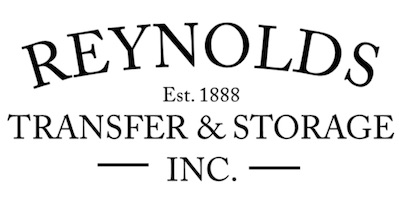Moving Checklist
Moving can be overwhelming, but we have a comprehensive moving checklist to help walk you through the process from planning your move to unpacking in your new home. With proper planning and the support of movers, your move can go smoothly.
Planning Your Move
Determine Your Timeline
The first step in planning your move is to determine your timeline. You should consider when you need to move out of your current home and when you are able to move into your new home. If you’re currently renting, make sure you know how far in advance you need to notify your landlord. If there is a gap between when you move out and when you move in, consider what you will do in the interim. You may need short-term storage for your belongings and temporary housing for yourself. Also think about how long there is between now and your move. This will help to determine the overall timeline for preparing and packing leading up to move out.
Determine Your Budget
Next, consider your budget for your move. If you’re moving for work, check with your employer to see if they cover relocation expenses.
Determine Your Moving Strategy
Both your timeline and your budget will help to determine your moving strategy. At this point, determine how much of your move you will do yourself, and how much you will hire out to movers. Will you do the packing yourself, or will you hire packers and movers?
Preparing Your Move
Reserve Your Moving Company
At this point, you should request a quote from the moving company and book your move.
Gather Packing Supplies
- Boxes – stock up on cardboard boxes, gently used boxes, or consider using eco-boxes
- Packing tape
- Bubble wrap and packing paper
- Labels
- Permanent markers
Begin Sorting Your Belongings
Go through all of your belongings and determine what to keep, what to donate, what to sell, and what to throw away. You should insure any high-value items that you will be moving. Check your furniture for scratches and dents, taking note of any blemishes.
Start Notifying Organizations of Your Address Change
Start off by creating a list of places with which you need to update your address. Organizations to consider include federal and state tax agencies, banks and credit unions, credit card companies, your employer, magazines and subscription services, and online shopping sites.
Set Up Mail Forwarding with the USPS
At least one week before you move, you should notify the post office of your address change and get any mail forwarded from your old address to your new address. This will prevent any lapse in mail service and ensure you get important mail.
Transfer Your Bank Account
If you bank with a local bank or credit union that doesn’t serve the area to which you’re moving, begin the process to transfer to a different bank or credit union.
Transfer Medical Records & Prescriptions
If you take any prescription medications, refill your prescriptions before you move. You should then transfer your prescriptions to a pharmacy near your new residence. You can also begin the request process to transfer your medical records to your new care provider.
Obtain Up-to-Date Pet Records
If you have a pet, obtain up-to-date vaccination records from your veterinarian. This will allow you to register your pet and help with continuation of vet care.
Cancel or Transfer Utilities at Your Old Home
Before you move out, make sure you cancel all your utilities at your old home. If your new home is within the service range of your current utility providers, you may be able to transfer your utilities to the new home rather than cancel. Utilities to cancel or transfer include internet, cable, water and sewer, gas, electric, and waste management.
Set Up Utilities at Your New Home
If you are unable to transfer your utilities to your new home, you will need to arrange for any necessary utilities at your new home. This should be done at least two weeks before you move in, ideally a month for any utilities that need to be installed.
Update Auto and Homeowners Insurance
If you are moving within your auto and homeowners insurance company’s coverage area, you will need to update your address and home information. Depending on where you move, you may need to switch auto insurance and homeowners insurance providers altogether.
Make Travel Arrangements
You’ve already hired movers to ensure your belongings arrive at your new house safe and sound. Now it’s time to make travel arrangements for yourself, your family, and your pets. Will you be driving, or does your move require air travel? This is especially important to consider for international moves.
Take Care of Minor Home Repairs
Before you move out, take care of any minor home repairs. Especially in the case of renting, fixing minor issues yourself will help you get back more of your security deposit.
Keep a Moving File
Throughout the moving process, save moving-related receipts, contracts, and documents in a file specifically for your move.
Packing For Your Move
Label Your Moving Boxes
While packing, label each box with the contents and the destination room in the new home. Consider using different color labels for each room for easy visual identification of the boxes, and don’t put items from different rooms into the same box.
Pack Wisely
- Start by packing non-essential items such as books, movies, home decor, etc.
- Pack essential items last, such as kitchen items, toiletries, and clothing
- Don’t pack important documents, your checkbook, credit cards, cash, your phone and charger, your laptop and charger, and valuables
- Use linens, towels, and other soft materials to pack and protect fragile items
- Heavier items should go in smaller boxes
- Fill the boxes to the top so they are easily stacked
- Drain all fluids from items such as hoses, lawn mowers, propane tanks, etc.
Pack a First Day Box
- Clothes, pajamas, and shoes
- Toiletries, towels, toilet paper, and other bathroom items
- Bed linens
- Medications, contacts, and eyeglasses
- Important documents and valuables
Pack a Moving Essentials Box
- Trash bags
- Light bulbs
- Tools
- Flashlights
- Paper towels
- Pen and paper
Dispose of Hazardous Items
Unless you plan to move them yourself, properly dispose of all hazardous and flammable items such as fire extinguishers, pool chemicals, aerosols, propane tanks, etc.
Gather Packed Boxes
Once you’re done packing, gather all packed boxes in an easily accessible area. This will help the movers and speed up loading out your belongings.
Disassemble Furniture
Before the movers arrive, take apart all your furniture that can be disassembled and reassembled in your new home. Check with your moving company to see if they have guidelines for which furniture should be disassembled and which can stay assembled.
The Move
Get the Keys
Get the keys to your new place ahead of the moving van arriving, or arrange for the realtor to meet you at your house when you arrive.
Keep Water and Snacks Handy
Moving is hard work, so it is important to stay hydrated and nourished.
Finish Cleaning
Once everything is packed up and loaded on the truck, finish cleaning.
- Clean the oven and stove
- Clean, defrost, and dry the refrigerator
- Sweep, mop, and vacuum the floors
Do a Final Walk-through
Before you hand over the keys to your landlord or the home’s new owner, do a final walkthrough to make sure nothing is left behind.
Moving In and Unpacking
Supervise the Move-In
Once the moving van arrives at your new home, direct the movers where to put the boxes.
Unpack Your Belongings
Begin unpacking the essentials first, then go room by room to unpack the rest of your home.
Clean Your New Home
While your home is not yet fully unpacked, take some time to thoroughly clean your new home.
Figure Out Trash and Recycling Pick-up Days
As you unpack and begin living in your new home, it’s important that you learn the local waste management collection schedule.
Change the Locks
As a safety precaution, it is a good idea to change the locks on your new home since you may not know how many keys exist for the home. At the very least, consider adding or changing the deadbolts. This is also a good time to make sure you have enough keys for your family and everyone who will need access to your home, such as dog walkers or house sitters.
Check the Alarms
Make sure the smoke alarms and carbon monoxide alarms in the home are functioning correctly.
Ensure Your Address is Visible
Make sure that your address is visible from the street. In addition to helping guests find your home, visible and legible house numbers help emergency services find your house if necessary. Some jurisdictions require house numbers to be three to six inches tall, so check with your municipality to see if there are any address signage requirements.
Establish Residence
If you moved to a different state, establish residence in your new state and acquire a new driver’s license for your state of residence.
Register Pets
If you moved to a different state or municipality and have a pet, you may need to register your pet. Each jurisdiction has different pet registration laws, so check with your local government for requirements.
Register to Vote
Anytime you move, you need to update your voter registration if you moved within the same county, or register with your new county and state. Each state has different guidelines for voter registration, so check with your local government for more information.
Leave a Review for Your Moving Company
Once you are all moved into your new home, consider writing a useful, thorough, and honest review of the movers you worked with.
What are the must-do tasks on your moving checklist? If you’re looking for a moving company to help with your upcoming move, contact us for more information!


Recent Comments